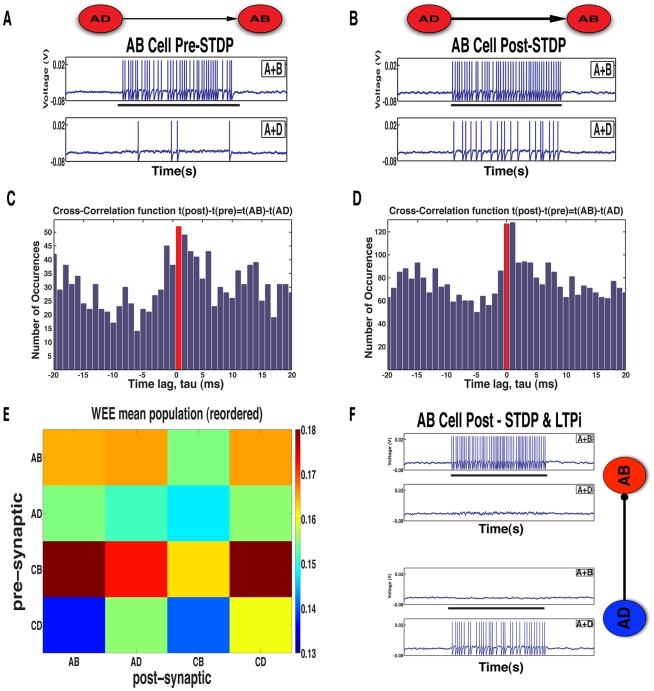Figure 5. STDP over-associates.
A–B. The voltage trace of a postsynaptic AB selective neuron (selectivity index = 2.22 before training) is shown in A before training the network with standard STDP. Following training with STDP the postsynaptic AB neuron, B, is now responsive to stimulus AD as well, reducing its selectivity (to a value of 1.77). C and D show the cross-correlation function between a presynaptic AD selective neuron and the postsynaptic AB selective neuron shown in A–B during the initial and final AD trials after standard STDP. Following training with standard STDP the synapse from the AD cell to the AB cell potentiates, as seen in the cross-correlation function by looking at the shift in the distribution from right to left of time lag τ = 0 (red bar) in the initial (C) to final (D) histograms. E. The net change in mean population recurrent excitatory weights demonstrates undesirable strengthening between multiple different stimulus-pair responsive populations, for example the AD-to-AB mean synaptic strength is greater than the recurrent AD-to-AD synaptic strength (network with 10 inputs per group with connection probability of 1/2). F. Standard STDP training with LTPi added eliminates the AB neuron's response to stimulus A+D due to strengthening of the presynaptic AD inhibitory synapse, illustrated on the right.

